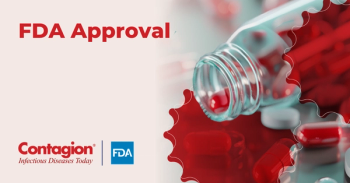
Using UV Light to Fight C. difficile in Hospitals
As hospitals continue to search for new ways to limit their number of patients acquiring Clostridium difficile (C. difficile) infections, a new study shows promise in the use of ultraviolet light technology for ridding patient rooms of highly resistant C. difficile spores.
As hospitals continue to search for new ways to limit their number of patients acquiring
The challenge in fighting
In tackling the issue of surface area spores, a recent
“The principle benefit is the rapid onset of action permitting short deployment times and thereby limiting impact on room cleaning and turn-around times,” study author David A. Pegues, MD, told Contagion. “The principle limitation is shadowing. Direct exposure of surfaces to UV light is required for optimal spore and bacterial killing, so some time is required to stage the room — opening drawers and moving furniture from against the wall.”
The study was conducted at three hematology and oncology inpatient units at the Hospital of the University of Pennsylvania with high rates of C. difficile, which persisted even after two years of efforts made to reduce infection rates. These efforts included antibiotic stewardship, contact precautions, daily patient bathing, use of antimicrobial soap by doctors, and use of bleach to clean room surfaces. In a 12-month evaluation period of the UV light device, the study team focused primarily on the terminal cleaning of patient rooms in which patients with C. difficile infections had stayed. All told, the UV device was deployed after 541 of a total 2,569 patient discharges. After cleaning all room surfaces with a bleach disinfectant, the UV device was placed in the room and ran for two eight-minute cycles, one each at either side of the foot of the bed. When the device did not fit in the bathroom, it was used in proximity to the doorway to disinfect surfaces such as the sink and the toilet. During the study period, rates of C. difficile infection dropped 25% in all patient units included in the study, whereas the rate went up 16% in units that had not been included in the study, indicating a strong association between UV light disinfection and a reduction in C. difficile infections.
Dr. Pegues noted that while his team’s study focused on rooms of patients who had active C. difficile infections during their hospital stay, the study did not look for patients who might be asymptomatic carriers of the bacteria but can still shed the spores. “Patients who have C. difficile fecal carriage but who have not been diagnosed with C. difficile infection may also shed C. difficile spores that persist in the hospital environment,” explained Dr. Pegues. “Thus there may be additional benefit to expanding the deployment of UV disinfection to the rooms of other at risk patients, or all rooms in units with high rates of C. difficile. “
The authors estimated the annual costs for the first year of operation of the UV device program to be $294,342 and $194,250 for the second year. With 53 fewer cases of hospital-acquired C. difficile than reported in the previous year, the researchers say their program has an annual savings in infection-related expenses of $348,528 to $1,537,000 a year.
“There is a capital cost for acquisition and maintenance of the UV equipment and to staff for optimal deployment,” says Dr. Pegues. “Even considering these costs, the substantial reduction in C. difficile infection and the estimated medical cost averted resulted in a cost effective intervention.”
Newsletter
Stay ahead of emerging infectious disease threats with expert insights and breaking research. Subscribe now to get updates delivered straight to your inbox.






















































































































































































































































































